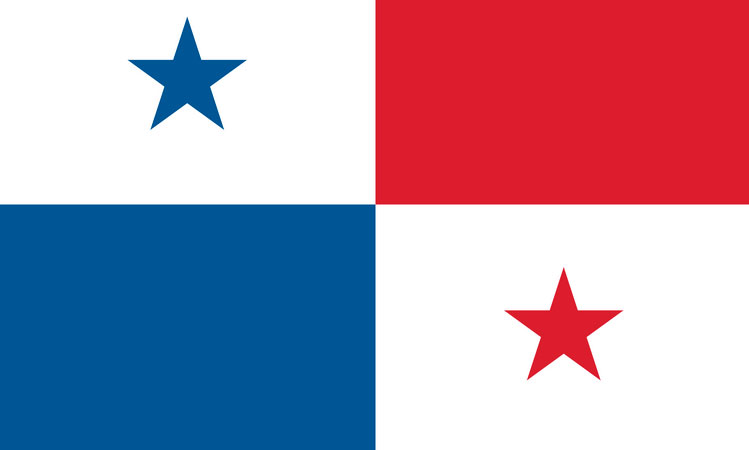Interesting Panama Facts
Panama is a coastal country located in Southern North America where it is bordered by Colombia, Costa Rica, the Caribbean Sea and Pacific Ocean. It spreads over 75,417 km2 of land. The approximate population of Panama is somewhere in the region of 4,098,587.
Check out interesting Panama facts and information about this North American country with our fact file for kids. Identify important facts about the size, climate, currency, flag, continent, people, culture, geography, landscape, landmarks, population, location and language of Panama.
Learn about North America with our interesting Panama facts for kids based on questions such as: What continent is Panama in? What famous landmarks are there in Panama? What is the capital city of Panama? What is the climate like in Panama? What is Panama famous for?
Panama Fact File: Continent: North America * Country Name(s): Panama, Republic of Panama * Location: Southern North America * Bordering: Colombia, Costa Rica, the Caribbean Sea and Pacific Ocean * Capital City: Panama City * Size: 75,417 km2 * Estimated Population: over 4,098,587 * Currency: Panamanian balboa (PAB) * Language(s): Spanish * Country Code: +507
Interesting Panama Facts for Kids
Interesting Facts for Kids 1: Size & location facts
Panama is located on the continent of North America, where it has a coastal position and is bordered by Colombia, Costa Rica, the Caribbean Sea and Pacific Ocean. There are seven continents in the world: Asia, Africa, North America, South America, Europe, Antarctica, Australia (Oceania). North America is the world's third largest continent, occupying a total area of 24,490,000 km2. North America has 23 countries, plus many other territories, and forms 16.5% of the world's landmass. Panama is a coastal country that spans across a total area of approximately 75,417 km2. It is a fairly small country by land area when compared to other countries across the world.
Interesting Facts for Kids 2: Population facts
The population of this North American country is over 4,098,587 people. The majority of Panama's inhabitants reside in Panama City which is the country's most populous city. Panama has an average population when compared to most other countries across the world, its overall population density is approximately 45 people per sq km. The estimated population of North America is approximately 573,777,000 inhabitants, making it the continent with the third largest population in the world. The continents in order of population, starting with highest population first, are: Asia, Africa, North America, South America, Europe, Australia (Oceania Region) and Antarctica. The total population of the entire world is in excess of 7.6 billion people.
Interesting Facts for Kids 3: Capital & major cities
The capital of Panama is Panama City. The names of other major cities located in this country are San Miguelito, Juan Díaz, David, Arraiján and Colón.
Interesting Facts for Kids 4: Country borders
The following guideline provides details on the approximate border lengths of Panama:
Coastline 2,490 km, Colombia 339 km, Costa Rica 348 km.
Interesting Facts for Kids 5: Climate and geography facts
Panama experiences a hot, humid tropical climate with a long rainy season that occurs from May to January. The geography of Panama is defined by it mountain regions, areas of high elevation and plains, its hilly regions and coastal areas. Panama controls the Panama Canal that connects the North Atlantic and North Pacific Oceans via the Caribbean Sea. The lowest point of Panama is the Pacific Ocean at 0m, and the highest point of elevation is Volcan Baru at 3,475m.
Interesting Facts for Kids 6: Natural Resources of Panama
Natural resources can be defined as materials and substances that occur naturally on Earth. Natural resources are very important across the world, and can be exploited for economic gain. The level of natural resources present in an individual country depends on varying factors which are influenced by the geography, climate and location of that country. Some countries, such as Russia, The United States, Saudi Arabia and Canada, have many natural resources, where as some other countries have limited to none. Food, construction and transport are three primary examples of uses of natural resources. The following information provides examples of these uses: fish occurs naturally in streams, rivers, lakes and oceans, and can be caught for food consumption. Wood/timber can be extracted from forests for construction purposes, i.e. to build homes and furniture. Crude oils can be refined into different kinds of fuels in order to power vehicles/cars. The natural resources of Panama include copper, mahogany forests, shrimp and hydropower (water power).
Interesting Facts for Kids 7: Language facts
The official language of Panama is Spanish. which is spoken by most of the population. Many indigenous languages are also spoken in this country.
Interesting Facts for Kids 8: Religion facts
The main religion of Panama is Roman Catholic at approximately 85% of the population. Around 15% are Protestant.
Interesting Facts for Kids 9: Symbols of Panama
Each country has its own individual culture, history and identity. Flags, emblems, symbols, colors, anthems, songs and mottos represent the national pride and identity of countries across the globe. These national symbols are forged through a nation's unique history and can represent both hardship and prosperity, embodying freedom, strength and unity. Flags, emblems, songs, mottos and colors reflect the past, present and future hopes of a country, and create an important image to the rest of the world. National symbols can include a mixture of things that are symbolic to a nation such as wildlife, plants, geographical features, crops, tools of agriculture, and tools of war. The following facts and information provide a guide to some of the most important national symbols, songs and colors of Panama:
National symbol(s): harpy eagle
National colors: blue, white and red
National Anthem/Song: Himno Istmeno (Translation: Isthmus Hymn)
National Holiday(s): Independence Day, 3 November (1903)
National Motto(s): Pro mundi beneficio (Translation: For the benefit of the world)
